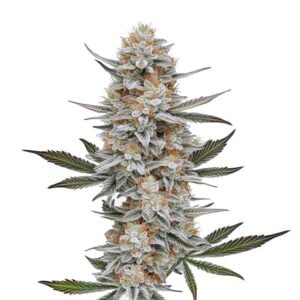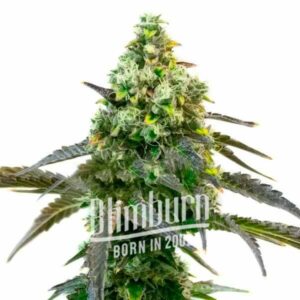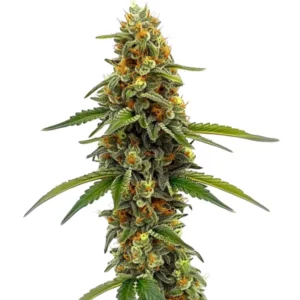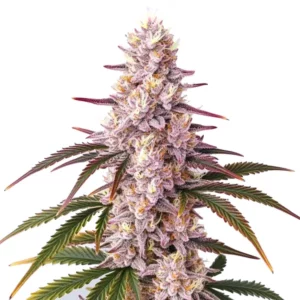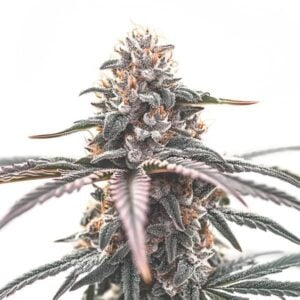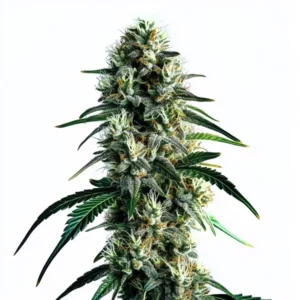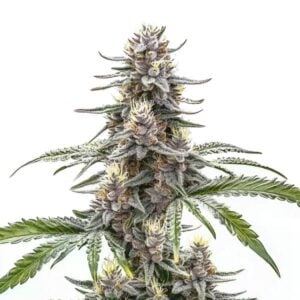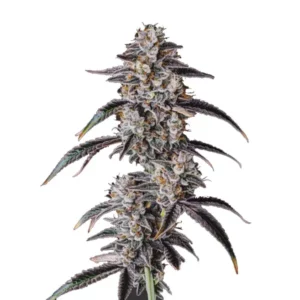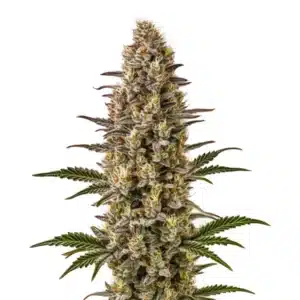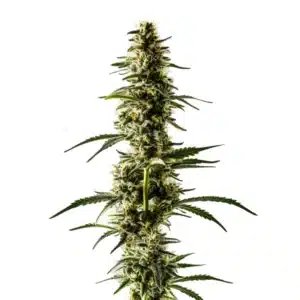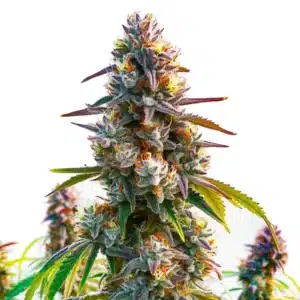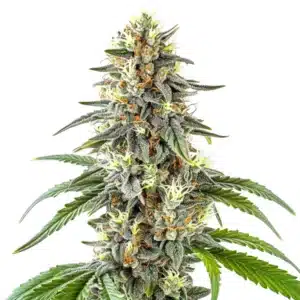Emerald Cup
The Emerald Cup stands as a beacon of excellence in the world of cannabis. Known for its rigorous standards and celebration of pure, sun-grown organic cannabis, this prestigious event has been at the forefront of the cannabis culture since its inception.
Showing 1–16 of 22 resultsSorted by popularity
What is the Emerald Cup?
The Emerald Cup is more than just a cannabis competition; it’s a cultural phenomenon that celebrates the finest organic cannabis while promoting sustainability, education, and community within the cannabis industry. Held annually in Northern California, the heart of America’s cannabis cultivation epicenter, the Emerald Cup has risen from its grassroots beginnings to become one of the most prestigious and highly anticipated events in the cannabis world.
Origins and Growth
The Emerald Cup was founded in 2003 by Tim Blake, a cannabis cultivator and advocate, with the vision of creating a competition that would celebrate the best sun-grown, organic cannabis in California. Originally a small, private event held on Blake’s own property in the Emerald Triangle—the region encompassing Mendocino, Humboldt, and Trinity Counties, known for its ideal cannabis growing climate—the Cup has grown significantly in size and reputation over the years.
Initially, the Emerald Cup was a way for local growers to showcase their harvest and share cultivation techniques. It was also a safe space for a community that had long operated in the shadows, due to the legal status of cannabis. As laws evolved and the use of cannabis became more accepted and legalized, the Emerald Cup opened up to a larger audience, including international competitors and attendees.
Judging and Standards
What sets the Emerald Cup apart from other cannabis competitions is its strict adherence to organic principles and the quality of the cannabis it showcases. The competition is open exclusively to organic, sun-grown cannabis products, reflecting Northern California’s tradition of outdoor farming. This focus on sustainable and natural cultivation practices is fundamental to the ethos of the Cup.
Judging at the Emerald Cup is comprehensive and handled by experts in the field, including seasoned growers, knowledgeable dispensary owners, and cannabis connoisseurs. The entries are evaluated based on several criteria: aroma, taste, effects, appearance, and the cleanliness of the grow. This meticulous process ensures that only the best of the best rise to the top, making winning a much-coveted honor that can significantly elevate a grower’s reputation and market value.
Impact and Legacy
The influence of the Emerald Cup extends beyond the growers and the competition itself. It serves as an educational platform, featuring speakers, workshops, and panels that address current issues in the cannabis industry, such as legal changes, sustainability practices, and new technological advancements. This focus on education helps to foster a well-informed community that is prepared to navigate the complexities of the cannabis market.
Moreover, the Emerald Cup has a significant cultural impact. It has helped shift public perception of cannabis from a stigmatized substance to a respected product that requires careful and skilled cultivation. The event celebrates cannabis culture at its finest, promoting values like community, transparency, and environmental responsibility, which resonate well beyond the cannabis industry.
The Significance of the Emerald Cup in Cannabis Culture
As a pioneer in the cannabis competition arena, the Emerald Cup has set a high standard for integrity and transparency in its judging process. It has played a crucial role in shaping public perception by promoting sustainable and organic farming practices. The event is a powerful platform for educating the public and legitimizing cannabis as a therapeutic and recreational substance.
Evolution of the Emerald Cup Over the Years
From humble beginnings among local growers, the Emerald Cup has evolved into a massive event that attracts thousands of attendees from around the globe. With each passing year, the competition has adapted to new regulations and industry shifts, always maintaining its commitment to environmental and social responsibility.
Emerald Cup Winning Seeds
Criteria for Judging at the Emerald Cup
Judging at the Emerald Cup is taken very seriously. Each entry is evaluated on several criteria including aroma, flavor, effects, appearance, and the plant’s overall health and ecological sustainability during cultivation.
Cultivation Secrets of Emerald Cup Champions
The Emerald Cup is renowned not just for the quality of its entries but also for the expert cultivation practices that produce them. Winning this prestigious competition is a testament to the grower’s mastery of cannabis cultivation, particularly under the strict organic protocols that the Cup demands. Here, we delve into the secrets and strategies that Emerald Cup champions use to cultivate award-winning cannabis.
Adherence to Organic Practices
The cornerstone of cultivation for Emerald Cup competitors is strict adherence to organic farming methods. This means no synthetic pesticides, fertilizers, or hormones are used at any stage of the cannabis growing process. Instead, champions rely on natural solutions like compost teas, beneficial insects, and organic soil amendments to enhance plant health and resilience. This organic approach not only meets the competition’s criteria but also leads to the development of cannabis with more pronounced flavors and aromas, which are critical factors in the judging process.
Soil Health and Biodiversity
Top growers understand that healthy soil is the foundation of a successful crop. Emerald Cup champions often use living soils—dynamic, microbially active systems that mimic natural soil ecosystems. These soils are rich in organic matter and teeming with beneficial microbes that aid in nutrient uptake and improve plant health. Champions also practice crop rotation and companion planting to maintain soil fertility and biodiversity, which are crucial for sustaining the soil’s health over multiple growing seasons.
Precision in Water and Nutrient Management
Water management is another crucial aspect of cultivating premium organic cannabis. Champions use drip irrigation systems and moisture sensors to optimize water usage and reduce waste. This precision irrigation ensures that plants receive the right amount of water at the right time, which is essential for maintaining an ideal growing environment.
Nutrient management is equally scientific among top growers. By understanding the specific nutrient needs of their cannabis strains, champions can tailor their feeding schedules and compositions to match the growth stage and health of the plant. This targeted feeding regimen helps in maximizing the plant’s genetic potential.
Natural Pest and Disease Management
Instead of relying on chemical pesticides, Emerald Cup winners often turn to integrated pest management (IPM) strategies. These might include introducing natural predators into the growing area, using plant-based pesticides, and implementing rigorous sanitation practices to prevent outbreaks. Such methods are not only better for the environment but also ensure that the cannabis remains pure and uncontaminated, a critical consideration for the judges at the Cup.
Harnessing the Microclimate
Understanding and leveraging the specific microclimate of their growing area is a key advantage for Emerald Cup growers. Factors such as sunlight exposure, humidity, temperature, and wind patterns are all considered when planning the cultivation process. Growers may choose specific cannabis strains that are best suited to their environmental conditions, or adjust their growing techniques to align with seasonal changes, ensuring optimal growth and resilience of the plants.
Innovative Cultivation Techniques
Many champions experiment with advanced cultivation techniques like vertical farming, the use of LED lighting to supplement natural sunlight, or aeroponics—a method where roots are suspended in the air and misted with nutrients. Such innovations can lead to higher yields and more efficient use of space and resources.
Attention to Harvesting and Curing
The final steps of harvesting and curing are as crucial as the growing process itself. Emerald Cup champions harvest their cannabis at peak trichome maturity, which is when the cannabinoids and terpenes are at their highest concentrations. Post-harvest, the curing process is carefully managed to ensure that the flavor, aroma, and potency of the cannabis are preserved and enhanced. This often involves controlling the humidity, temperature, and air circulation in the curing environment to develop the desired flower characteristics.
By combining these detailed cultivation techniques with a deep respect for the plant and the environment, Emerald Cup champions are able to produce cannabis that is not only effective and desirable but also sustainable. These practices set a standard in the industry, inspiring both novice and experienced growers to adopt methods that respect the earth and produce exceptional cannabis.
Growing Tips for Emerald Cup Winning Strains
Growing award-winning cannabis strains that have been recognized at the Emerald Cup involves more than just basic gardening skills; it requires an understanding of advanced cultivation techniques, a deep respect for the environment, and a dedication to the craft of cannabis cultivation. Here’s a detailed guide on how to grow Emerald Cup-winning strains, whether you’re a beginner or an experienced cultivator.
Understanding the Genetics
The first step in growing Emerald Cup-winning strains is to understand the genetics you’re working with. Each strain has specific growth patterns, nutrient needs, and environmental preferences. For instance, strains that have done well in the temperate climate of Northern California might require adjustments in temperature and humidity levels to thrive elsewhere. Start by researching the specific needs of your chosen strain, paying close attention to its history, parent strains, and typical growth patterns.
Optimal Growing Conditions
To emulate the success of Emerald Cup winners, creating the right environment is crucial. Most award-winning strains at the Emerald Cup are grown outdoors, benefiting from natural sunlight which is ideal for promoting robust growth and potent cannabinoid profiles. If you’re growing indoors, use full-spectrum LED lights to mimic natural sunlight as closely as possible.
Temperature and Humidity: Maintain a daytime temperature around 75°F (24°C) and slightly cooler at night to mimic the natural drop in temperature. Humidity levels should vary from vegetative to flowering stages, typically starting higher at about 60% and reducing to around 40% to prevent mold and mildew as buds develop.
Soil and Nutrients: The choice of soil and nutrients plays a significant role in the success of any cannabis plant. Emerald Cup strains often thrive in rich, organic soil that mimics their natural soil environment. Use organic soil with good drainage and aeration properties, and enrich it with natural compost, worm castings, and bat guano. Organic nutrients are preferred to maintain the purity and natural flavors of the strains.
Watering Techniques
Watering must be carefully managed to avoid both under and overwatering, which can stress the plant and lead to poor growth or disease. The key is to maintain a balance that keeps the soil slightly moist but not waterlogged. Implementing a drip irrigation system can help provide a consistent amount of water that can be adjusted as the plant grows and the seasons change.
Training and Pruning
Training techniques are essential for maximizing sunlight exposure and improving air circulation around the growing buds. Techniques such as topping (removing the top of the plant to promote lateral growth) and low-stress training (bending and tying the branches horizontally) can increase yield and allow more uniform light distribution. Regular pruning is also necessary to remove unnecessary foliage and direct the plant’s energy to the top-producing buds.
Pest and Disease Management
Organic pest and disease management is a hallmark of Emerald Cup cultivation practices. Avoid synthetic pesticides and instead opt for natural solutions like neem oil, beneficial insects, and companion planting to deter pests. Regular inspections of your plants are vital to catch any issues early before they can become a major problem.
Harvesting and Curing
Harvesting at the right time is crucial for the quality of your cannabis. Monitor the trichomes on the buds; when they shift from clear to a milky white or amber color, it’s generally time to harvest. After harvesting, proper curing is essential to enhance the flavor and potency of the buds. Dry the buds slowly in a controlled environment and then cure them in airtight containers, opening them periodically to allow for air exchange.
Learning from Each Crop
Every crop is a learning experience. Take detailed notes on your growing conditions, plant behavior, and the final product. Over time, these notes will help you refine your techniques and adapt your practices to better suit the specific strains you are cultivating.
By following these tips and dedicating yourself to continuous learning and improvement, you can approach the standard of excellence that Emerald Cup-winning strains represent. Whether you’re growing for personal use or aiming to enter the competition yourself, the key to success lies in a deep understanding of your plants and a commitment to sustainable, quality-focused cultivation practices.



